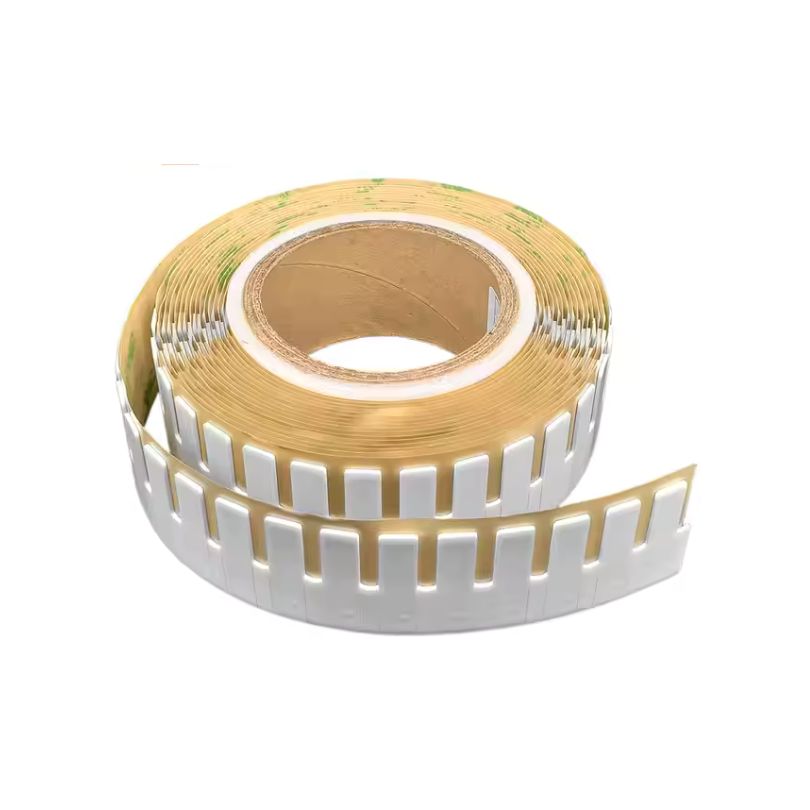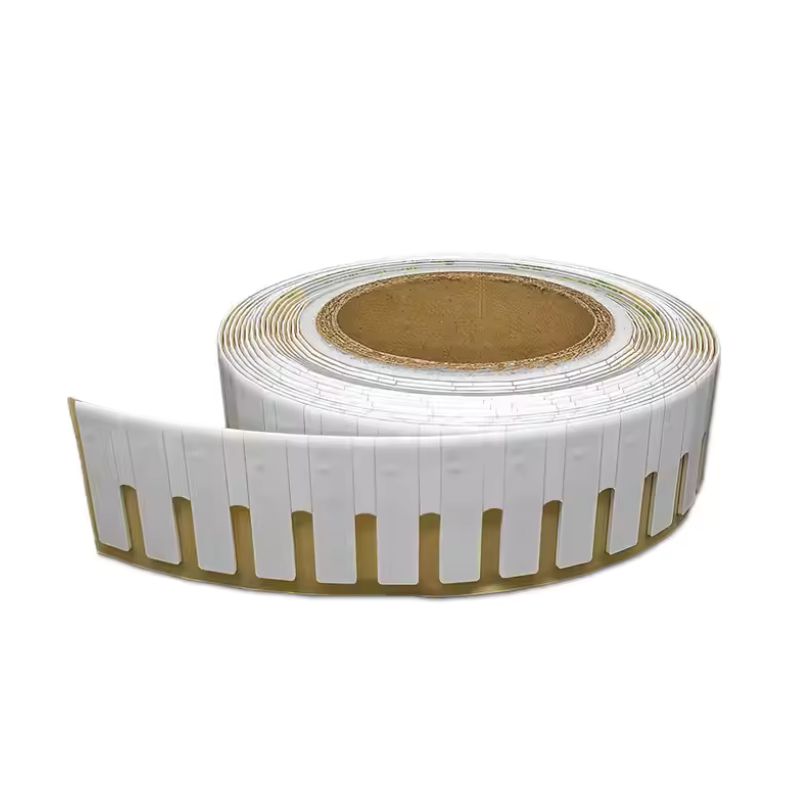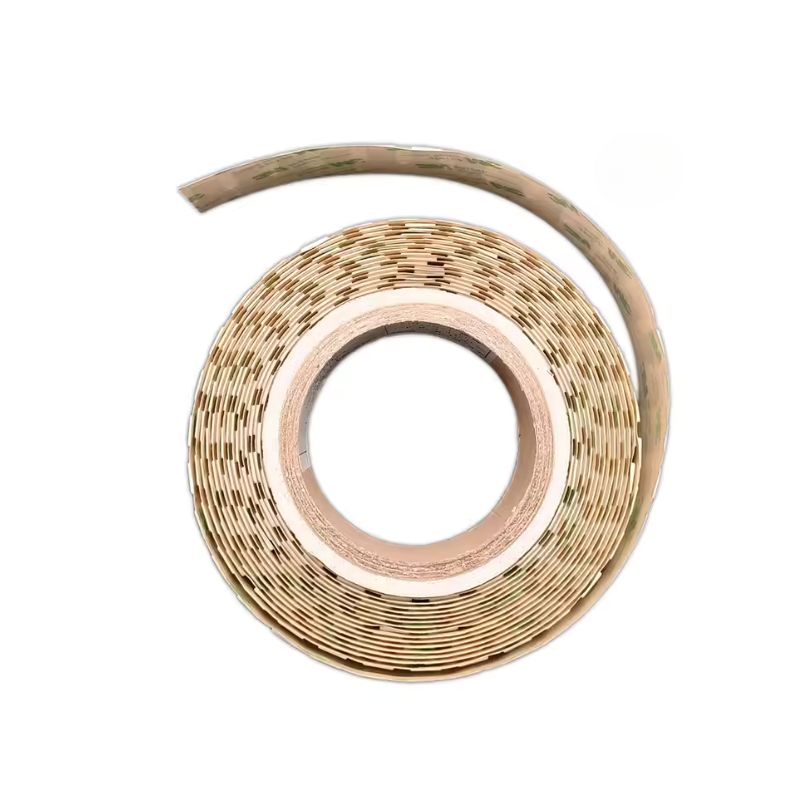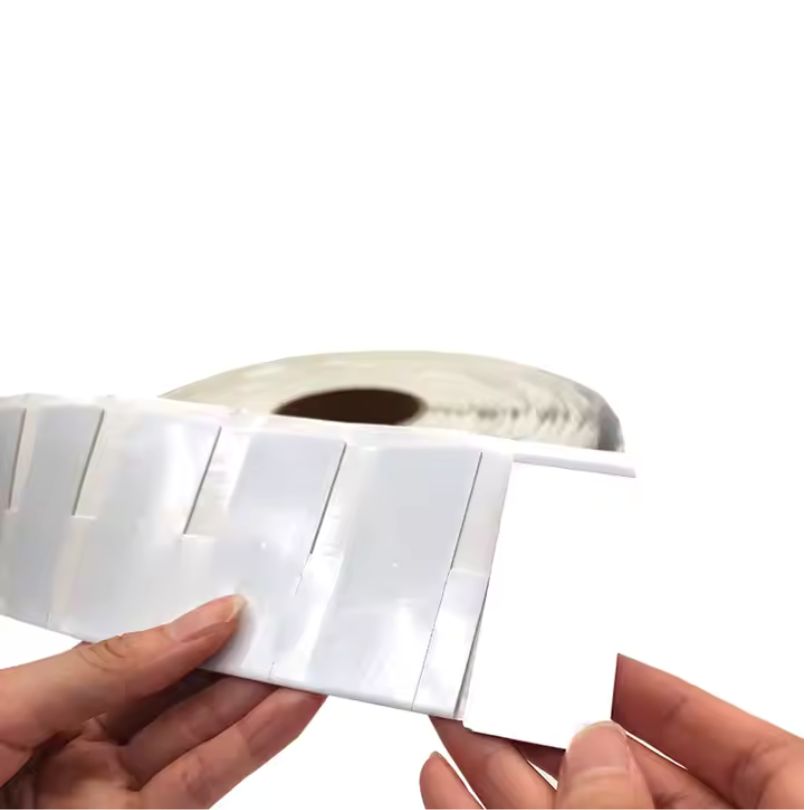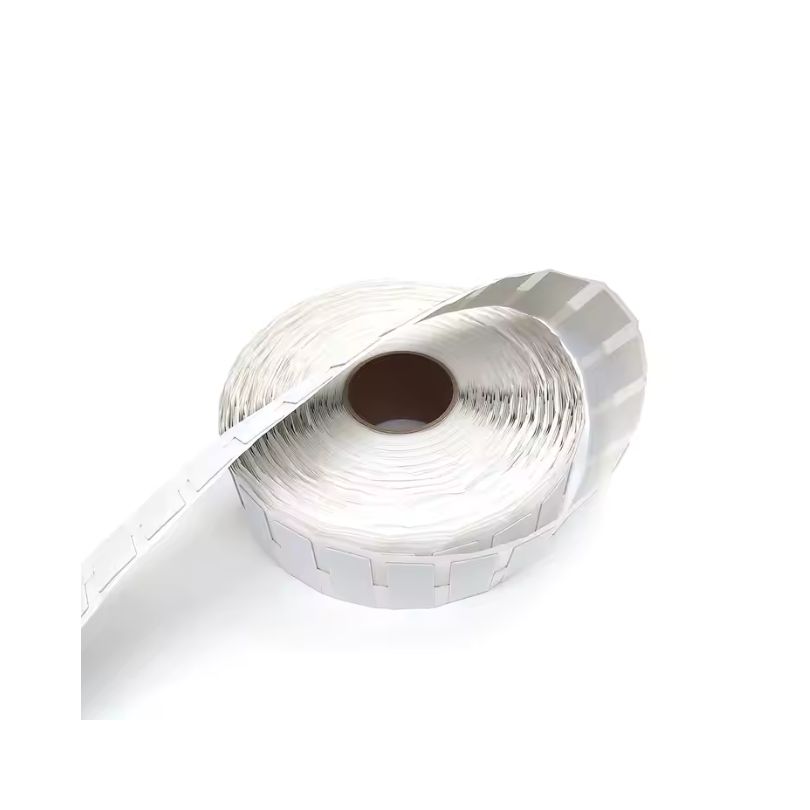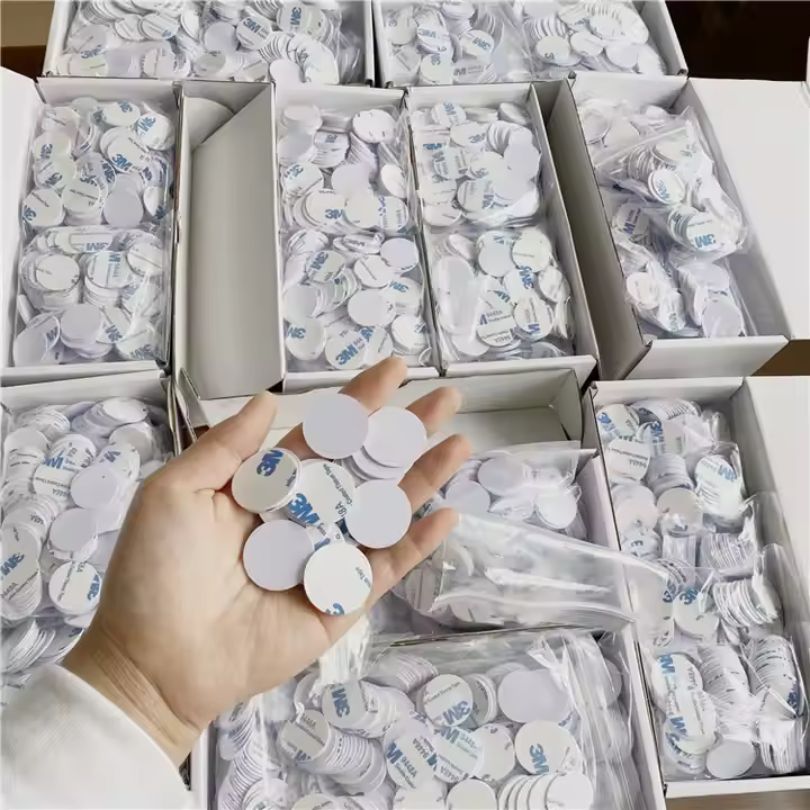
Programmable Anti Metal RFID Labels for Metal Surfaces
RFID Labels for Metal | Custom Anti Metal RFID Label for Asset Tracking
Tracking metal assets has always been a challenge—but not anymore. Our RFID labels for metal provide a powerful solution for tracking tools, equipment, containers, and IT assets directly on metallic surfaces. These anti metal RFID labels are specifically designed to eliminate signal interference, offering seamless data capture even when applied to steel, aluminum, or other conductive materials.
Unlike generic RFID tags, our RFID labels for metal surfaces are fully programmable and customizable. You can encode your own data, apply custom printing, and integrate them effortlessly into your existing asset management system.
Key Features of RFID Labels for Metal
- Anti Metal RFID Label Technology: Special shielding ensures reliable RFID scanning directly on metal surfaces.
- Customizable Data Encoding: Program each RFID label for metal with unique IDs, asset details, or maintenance schedules.
- Durable Construction: Built with PET, foam, and aluminum layers to withstand harsh industrial environments.
- Long Read Range: Up to 9 meters (30 feet) read distance on metal with a high-performance RFID reader.
- Reusable & Rewritable: Each RFID label for metal surfaces supports 100,000 write cycles for long-term use.
- Custom Printing Available: Add your logo, serial numbers, or barcodes for dual-use RFID and visual identification.
Real Use Case: RFID Labels for Metal in IT Asset Tracking
A global tech company deployed our anti metal RFID labels on their servers, laptops, and network equipment. By using RFID labels for metal surfaces, they eliminated manual scanning errors and reduced IT asset audits from 3 weeks to 3 days. The result? A 90% reduction in labor costs for asset management and improved inventory accuracy across 5 data centers.
Technical Specifications
| Feature | Specification |
| Frequency | UHF (860–960 MHz) |
| Protocol | ISO 18000-6C / EPC Gen2 |
| Chip Options | Impinj Monza R6, Alien Higgs-3 (customizable) |
| Read Range (On Metal) | Up to 9 meters (depending on reader) |
| Memory | 96-bit EPC / Up to 512-bit user memory |
| Write Endurance | 100,000 write cycles |
| Data Retention | 10 years |
| Operating Temperature | -40°C to +85°C |
| Label Material | PET / Foam / Aluminum with adhesive |
| Dimensions | Customizable (Typical: 100mm x 30mm x 1.5mm) |
Applications
- Manufacturing & Logistics: Apply RFID labels for metal surfaces to track tools, equipment, and containers in production lines.
- IT Asset Management: Use anti metal RFID labels for tracking laptops, servers, and office tech in data centers.
- Construction & Heavy Industry: Tag machinery, rental tools, or steel components with RFID labels for metal.
- Healthcare & Medical Equipment: Monitor metal medical devices with programmable RFID labels for metal surfaces.
- Returnable Transport Items: Label steel cages, pallets, and containers for efficient logistics and supply chain management.
Why Choose Our RFID Labels for Metal?
- Factory-Direct Customization: We offer custom printing, sizing, and encoding at factory-direct pricing.
- True Anti Metal RFID Label Technology: Designed specifically for metal asset tracking—no workaround solutions.
- Fully Programmable: Our RFID labels for metal are user-programmable for full control over your asset data.
- Global Compatibility: Works with all EPC Gen2 and ISO 18000-6C compliant systems.
- Proven ROI: Reduce labor costs, improve tracking accuracy, and streamline audits.
Track your metal assets with confidence using our RFID labels for metal.
FAQ
What are RFID labels for metal?
RFID labels for metal are specialized tags with anti-metal shielding that allow RFID scanning directly on conductive surfaces like steel or aluminum.
How do anti metal RFID labels work?
An anti metal RFID label includes a foam or ferrite layer that prevents signal interference from metal, enabling the tag to function properly when applied to metal surfaces.
Can I program my own data into the RFID labels for metal?
Yes! Our RFID labels for metal are fully programmable. You can encode asset IDs, maintenance logs, or serial numbers using RFID software or readers.
Are these RFID labels for metal surfaces reusable?
They are rewritable up to 100,000 times. However, since they use adhesive backing, the anti metal RFID label is typically for permanent application.
Can I get custom sizes or logos printed on the RFID labels for metal?
Absolutely! We provide full customization for size, logo, serial numbers, and barcode printing.
Get Your Custom RFID Tags
As a leading custom RFID tag manufacturer, we craft solutions based on the unique needs of your operation. We offer a wide range of customization options, including material, size, frequency, encoding, and read distance, ensuring each RFID Tag is perfectly customized to your requirements. No matter what application you use RFID tags for, we can provide rugged, reliable RFID tags that meet the highest quality and durability standards. Here are the main ways we customize RFID tags to fit your needs.

Material Selection
Material is key for customizing RFID tags. Plastic works in harsh conditions, while softer materials suit delicate spaces. Different materials also affect signal performance. Pick what fits your use case to ensure your tags last and work reliably.

Customized Size
Size shapes usability. Small tags fit tight spaces or tiny items, while larger tags are easily read. In crowded areas, sleek tags prevent clashes. Align shape and dimension with your goods for visibility, convenience, and performance.

Frequency Requirements
Choose LF, HF, or UHF based on read range, speed, and interference. LF and HF resist metals and liquids but have shorter ranges. UHF offers an extended range yet may face signal blocks. Match frequency to your environment for reliable performance.

Reading Distance
Define the distance at which you have to read the tag. Short distances work for retail checkouts, while warehouses may need meters of coverage. Antenna design, reader settings, and power outputs affect range.Adjust these factors to capture data accurately at the distance you need.

Encode
Plan how data is stored on each tag. Some only hold an ID, while others contain detailed info. Decide if you need a simple EPC or added user memory. Ensure your chosen format works with existing software. Proper encoding streamlines processes and slashes errors.

Application Environment
Consider real-world conditions. Temperature swings, humidity, and chemicals can degrade tags. For outdoor use, opt for UV-resistant casings. In healthcare or food settings, ensure compliance with safety rules. Matching your tags to the environment maximizes their lifespan.
Related Products
Customize any RFID tags from our factory to meet your requirements.

